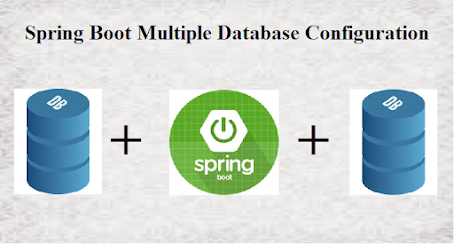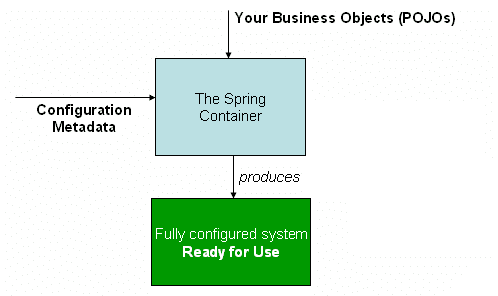Hello guys, earlier, I shared how to solve creating bean error in Spring Boot and today, I am going to explain how to deal with error related to started Application Context. Spring Boot is a popular framework for building Java applications, providing a streamlined development experience. However, like any software, Spring Boot applications can encounter errors during startup. One common error that developers may encounter is the "Error starting ApplicationContext" error. This error typically indicates an issue with the application's configuration or dependencies. In this article, we will explore various solutions to fix this error and ensure a successful startup of your Spring Boot application.
How to fix "Error starting ApplicationContext." in Spring Boot
Now, let's go deeper and understand how to solve this error or exception in Spring Boot:
1. Check Dependency Conflicts
Dependency conflicts can cause issues during the application startup process. When different dependencies require conflicting versions of the same library, it can lead to runtime errors. To resolve this, analyze your application's dependencies and identify any conflicting versions.
You can use tools like the Maven Dependency Plugin or Gradle Dependency Insights Plugin to help identify and resolve conflicts. Exclude conflicting dependencies or force a specific version to ensure compatibility and resolve the "Error starting ApplicationContext" error.
2. Verify Configuration Files
If you know, Spring
Boot relies on configuration files to determine the application's
behavior. Ensure that your configuration files, such as
application.properties or application.yml, are properly formatted and
contain valid configuration properties.
You can start checking for typos, missing values,
or incorrect syntax that could lead to startup errors. Validate the
configuration against the Spring Boot documentation to ensure correct
usage of properties and settings.
3. Check Database Configuration
If
your application uses a database, incorrect or misconfigured database
connection properties can cause the "Error starting ApplicationContext"
error. Verify that the database connection URL, username, and password
are correct.
You should also ensure that the database server is running and accessible
from your application. Additionally, check for any specific database
drivers or dialects that need to be configured in your application.
4. Examine Log Output
Review
the application logs to identify any error messages or stack traces
that may provide clues about the cause of the error. Spring Boot's
default logging framework, Logback, captures log output to the console
or log files.
Look for any exception messages, error codes, or warnings
that can help pinpoint the issue. Analyzing the log output can often
provide valuable insights into the root cause of the "Error starting
ApplicationContext" error.
5. Analyze Bean Configuration
Spring
Boot relies heavily on dependency injection and the management of
beans. Incorrectly annotated or misconfigured beans can lead to errors
during application startup. Examine your bean configurations, including
@Component, @Service, @Repository, or @Configuration annotations.
Ensure
that beans are properly defined, and dependencies are correctly
injected. Pay attention to circular dependencies, missing or conflicting
qualifiers, and potential issues with autowiring.
6. Resolve Classpath Issues
Classpath
issues can also cause the "Error starting ApplicationContext" error.
Verify that all required dependencies are included in your application's
classpath. Check the dependency versions and ensure that they are
compatible with your Spring Boot version.
Additionally, make sure that
all necessary class files and resources are present in the correct
locations within your project structure.
7. Disable Auto-Configuration
Spring
Boot provides auto-configuration to automatically configure beans and
components based on the dependencies present in your classpath. However,
auto-configuration can sometimes conflict with your specific
application requirements.
To troubleshoot the "Error starting
ApplicationContext" error, you can disable specific auto-configurations
or even turn off auto-configuration entirely. Use the
@EnableAutoConfiguration annotation and specify the exclude attribute to
disable specific auto-configurations or use
@SpringBootApplication(exclude = ...). Be cautious when disabling
auto-configuration, as it may affect other parts of your application.
8. Update Spring Boot Version
In
some cases, the "Error starting ApplicationContext" error may be due to
a compatibility issue between your application code and the Spring Boot
version you are using. Consider updating your Spring Boot version to a
more recent release.
Newer versions often include bug fixes, performance
improvements, and updated dependencies. Be sure to review the release
notes and migration guides when upgrading to ensure a smooth transition.
9. Rebuild and Clean Dependencies
If
none of the above solutions resolve the "Error starting
ApplicationContext" error, try cleaning and rebuilding your project.
Remove any generated files, temporary files, or outdated artifacts.
Clear your local Maven or Gradle cache to ensure a clean build. This
process can help resolve any issues related to outdated or corrupt
dependencies.
10. Seek Community Support
If
you have exhausted all possible solutions and are still unable to fix
the "Error starting ApplicationContext" error, don't hesitate to seek
help from the Spring Boot community. Post your issue on the Spring Boot
forum, ask questions on developer community platforms like Stack
Overflow, or consult the official documentation and troubleshooting
guides. The community is often willing to assist and provide insights
based on their experiences.
11. Enable Debugging and Verbose Logging
When
encountering the "Error starting ApplicationContext" error, enabling
debugging and verbose logging can provide more detailed information
about the issue. Increase the log level to debug in your logging
configuration (application.properties or application.yml).
This will
generate more extensive logs during the startup process, allowing you to
trace the error's root cause.
By examining the
verbose logs, you can identify potential misconfigurations, missing
dependencies, or conflicting components that are causing the error. Look
for any exceptions, stack traces, or error messages that provide
insights into the specific problem. This increased level of logging can
significantly aid in troubleshooting and finding a solution.
12. Validate Application Annotations and Component Scanning
Spring
Boot relies on component scanning to automatically detect and configure
beans and components in your application. Verify that all necessary
components, controllers, services, and repositories are annotated
correctly (@Component, @RestController, @Service, @Repository, etc.).
Check for any potential issues with the package scanning configuration,
such as incorrect base package settings.
Conclusion
That's all about how to solve "Error starting ApplicationContext in Spring Boot. As we have seen the
"Error starting ApplicationContext" error in Spring Boot can be caused
by various factors, including dependency conflicts, configuration
issues, database misconfigurations, bean configuration problems,
classpath issues, and more.
By following the troubleshooting steps
outlined in this article, you can identify and resolve the underlying
cause of the error. Remember to carefully analyze your application's
dependencies, configurations, logs, and code to pinpoint the issue
accurately.
With perseverance and the help of the Spring Boot community,
you can overcome the "Error starting ApplicationContext" error and
ensure a successful startup of your Spring Boot application.
Other Java and Spring Boot articles you may like
Thanks for reading this article so far. If you like my explanation and solution of this Spring Boot error then please share with your friends and colleagues. If you have any questions or feedback then please drop a note.
- 5 Spring Boot Features Every Java Developer Should Know (features)
- 5 Course to Master Spring Boot online (courses)
- 10 Things Java Developer should learn (goals)
- Top 5 Free Courses to learn Spring and Spring Boot (courses)
- 15 Spring Boot Interview Questions for Java developers (questions)
- 10 Tools Java Developers use in their day-to-day life (tools)
- 10 Tips to become a better Java developer (tips)
- 3 Best Practices Java Programmers can learn from Spring (best practices)
- Top 5 Spring Boot Annotations Java Developers should know (annotations)
- 5 books to learn Spring Boot and Spring Cloud (books)
- 5 courses to learn Spring Boot in depth ( courses)
- 21 Skills Java Developers Can Learn to Enhance heir profile (skills)
Thanks for reading this article so far. If you like my explanation and solution of this Spring Boot error then please share with your friends and colleagues. If you have any questions or feedback then please drop a note.
![How to fix "Error starting ApplicationContext" in Spring Boot? [Solution]](https://blogger.googleusercontent.com/img/a/AVvXsEhJ35v9kIavcX0SUC68lomJUjiMnDvPC4jp3PSTWIOwXFq54qYnPWYpphLLGuR7joxwBhNky26hs2YGbqM1EkJhaMkXQhC63EsESeS8X8adoG53jltMzLJwPko8OCnHGzi3HnCRbAoam1cU2P5Td9lajm5Z0XiSPIPBkoIjVCizwrk2WxUFcvdNfH3Utsg=w533-h338)







No comments:
Post a Comment